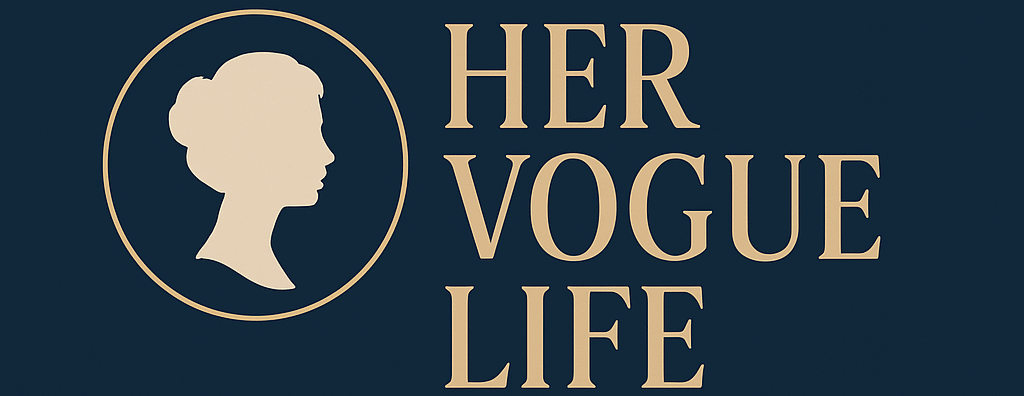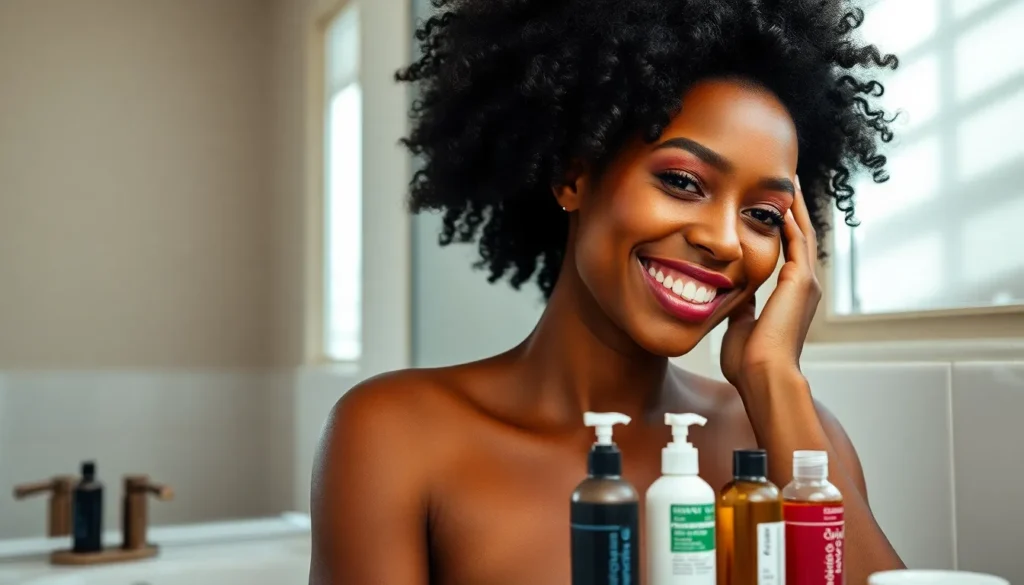Growing healthy, long hair isn’t just a dream—it’s totally achievable when you understand what your hair needs. We know the unique challenges that come with caring for Black hair, from managing different textures to dealing with breakage and slow growth patterns.
The truth is, your hair grows at the same rate as everyone else’s, but it’s more fragile and prone to breakage due to its structure. That’s why we’ve gathered the most effective strategies that actually work for our hair type. These aren’t generic tips you’ll find everywhere—they’re specifically customized to help you retain length and achieve the healthy hair you’ve always wanted.
Whether you’re dealing with damaged edges, struggling with protective styling, or simply want to maximize your growth potential, we’ll show you exactly what works. Let’s jump into the proven methods that’ll transform your hair journey once and for all.
Understanding the Unique Structure of Black Hair
Understanding Black hair’s structure helps us make informed decisions about our hair care routines. The science behind our hair reveals why certain approaches work better than others.
The Science Behind Curl Patterns and Porosity
Curl patterns classify Black hair into three main categories that affect how we care for our strands. Type 3 hair features loose curls and waves, while Type 4A creates soft coils with visible curl patterns. Type 4B hair forms tighter coils with less defined patterns, and Type 4C produces the tightest coils with minimal visible curl definition.
Porosity determines how easily our hair absorbs and releases moisture through the cuticle layer. Low porosity hair has tightly closed cuticles that resist moisture penetration, making it harder to hydrate but easier to maintain moisture once absorbed. High porosity hair features open cuticles that quickly absorb moisture but lose it just as fast, requiring frequent conditioning treatments.
The curved shape of Black hair creates weak points along each strand where breakage commonly occurs. Our hair follicles produce sebum that struggles to travel down the curved shaft, leaving ends naturally drier than straighter hair types. This structure makes our hair more susceptible to tangling and requires gentler handling techniques.
Common Challenges That Affect Growth Rate
Dryness creates the biggest obstacle to length retention because our natural oils can’t reach hair ends effectively. Environmental factors like low humidity, harsh weather, and indoor heating systems strip moisture from our strands daily. We must actively replace this lost moisture through regular deep conditioning and protective styling methods.
Breakage occurs more frequently at the points where our hair curves and bends during daily manipulation. Aggressive brushing, tight ponytails, and rough towel drying cause mechanical damage that shortens our hair faster than it grows. Chemical treatments like relaxers and permanent colors weaken the protein structure, making strands more prone to snapping.
Tangling happens naturally due to our hair’s texture, but improper detangling techniques cause unnecessary breakage. Rushing through the detangling process or using the wrong tools creates knots that require cutting to remove. We lose important length when we don’t take time to carefully separate strands with appropriate products and techniques.
Establishing a Consistent Hair Care Routine
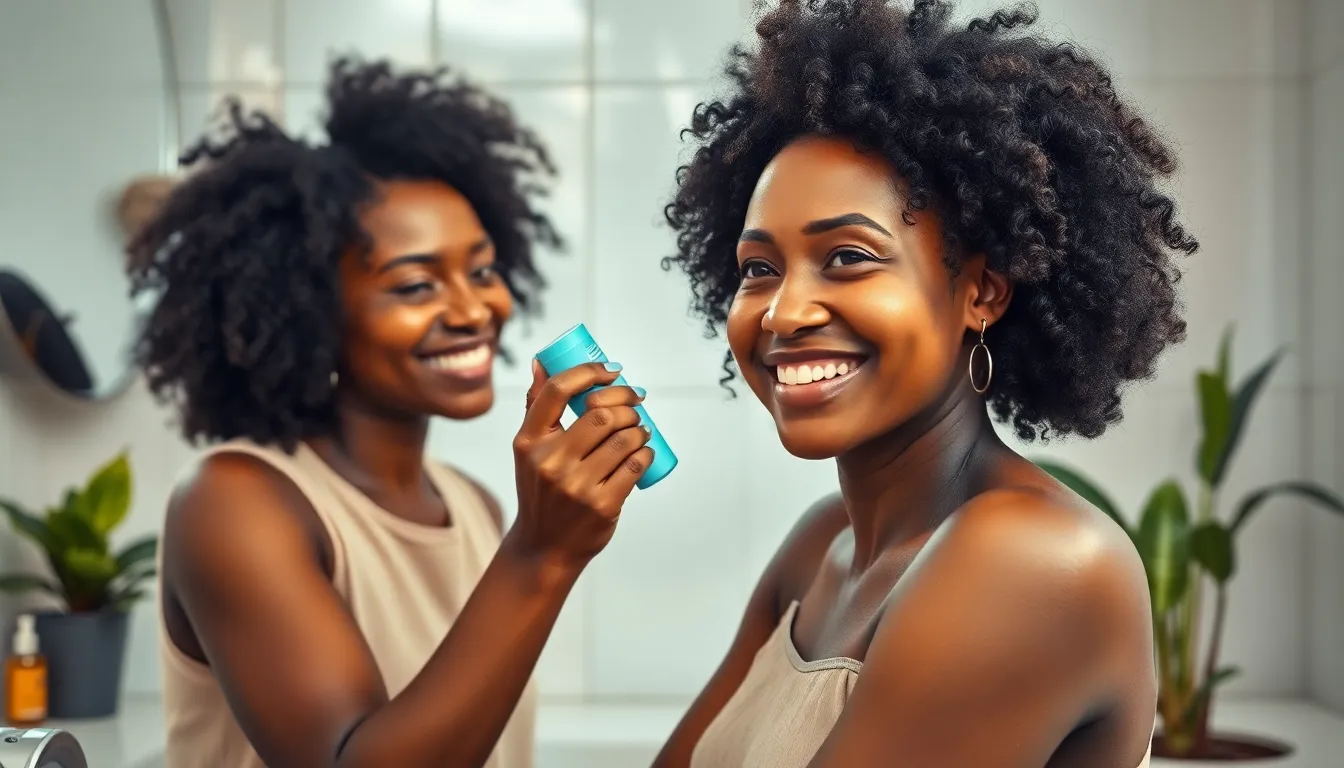
Building a consistent hair care routine forms the foundation for healthy hair growth and length retention. We’ll focus on three key components that work together to maintain optimal hair health.
Daily Moisture and Sealing Techniques
Moisturizing becomes essential when we use water-based leave-in conditioners to provide our hair with the hydration it needs. Daily moisture application helps combat the natural dryness that affects Black hair textures.
Sealing locks in moisture using natural oils like coconut, olive, or jojoba oil after applying our leave-in conditioner. This technique creates a protective barrier that prevents moisture loss throughout the day.
Protective styling maintains our hair’s integrity by keeping it in simple styles like twists that reduce manipulation and environmental damage. These styles help preserve our hair’s natural moisture while promoting growth.
Nighttime protection preserves our styling efforts and moisture levels when we sleep with satin or silk scarfs, bonnets, or pillowcases. This practice reduces friction and prevents frizz formation overnight.
Weekly Deep Conditioning Treatments
Deep conditioning treatments replenish moisture and strengthen hair strands when we dedicate time each week to this intensive care routine. Weekly treatments using ingredients like honey, shea butter, and aloe vera restore vitality to our hair.
Washing frequency matters for maintaining healthy hair, so we recommend washing once a week or every other week to preserve natural oils. This schedule prevents over-drying while keeping our scalp clean.
Sulfate-free shampoos protect our hair’s natural oil barrier and prevent excessive dryness during cleansing. These gentler formulas maintain our hair’s moisture balance while effectively removing buildup.
Hot oil treatments nourish and protect our hair when we apply them twice monthly as part of our routine. These treatments penetrate the hair shaft to provide deep conditioning benefits.
Monthly Protein Treatments for Strength
Protein treatments strengthen our hair’s structure by adding elasticity and resilience to each strand. We incorporate these treatments monthly to maintain the proper protein-moisture balance.
Regular trimming removes split ends and prevents breakage that can halt our growth progress. Scheduling trims every 6-8 weeks helps maintain healthy ends and supports length retention.
Heat protection becomes crucial when we use styling tools, so applying heat protectants before any thermal styling prevents damage. Limiting heat exposure altogether gives our hair the best chance to thrive.
Consistency creates results when we follow these routines faithfully, allowing our hair to respond positively to the care we provide. Each element works synergistically to support our hair growth goals.
Choosing the Right Products for Your Hair Type

Selecting products that work with your hair’s unique characteristics makes all the difference in your growth journey. Our hair’s curl patterns and porosity levels determine which formulations will provide the best results for moisture retention and strength.
Sulfate-Free Shampoos and Co-Washing Options
Sulfate-free shampoos protect our hair’s natural moisture barrier while still providing effective cleansing. Traditional sulfates strip away the essential oils our hair desperately needs, leaving it dry and vulnerable to breakage. Gentle cleansing agents in sulfate-free formulas work without disrupting our hair’s delicate balance.
Co-washing becomes a game changer for maintaining hydration between regular wash days. Cleansing conditioners remove buildup while simultaneously adding moisture back to our strands. We can use co-washing methods 2-3 times per week to keep our hair soft and manageable without over-drying.
Products designed specifically for coarse, curly, and kinky textures address our hair’s unique needs more effectively than generic formulas. These specialized cleansers contain ingredients that work with our curl patterns rather than against them.
Leave-In Conditioners and Natural Oils
Leave-in conditioners provide continuous protection and moisture throughout the day. Water-based formulas penetrate our hair shaft better than heavy creams, delivering hydration where it’s needed most. Apply these products to damp hair for maximum absorption and effectiveness.
Natural oils like coconut, jojoba, argan, and castor oil seal moisture into our hair cuticles. Each oil offers exact benefits: coconut oil penetrates the hair shaft, jojoba mimics our scalp’s natural sebum, argan provides antioxidants, and castor oil promotes circulation. Layer these oils over leave-in conditioners to lock in hydration and reduce breakage.
Timing matters when applying these products to achieve optimal results. Fresh out of the shower, our hair cuticles remain open and ready to absorb moisture from leave-in treatments. Follow immediately with a light layer of natural oil to seal everything in place.
Growth-Promoting Serums and Supplements
Growth serums containing biotin, peptides, and essential vitamins can stimulate follicle activity and support healthier hair production. These topical treatments work directly on the scalp to create optimal conditions for growth. Massage serums into clean scalp areas using gentle circular motions to improve absorption.
Supplements like biotin, vitamin E, and folic acid support hair growth from within our bodies. Biotin strengthens hair structure, vitamin E improves circulation, and folic acid aids in cell production. Individual results vary based on our body’s absorption rates and existing nutrient levels.
Consult with healthcare providers before starting any supplement regimen to ensure safety and effectiveness. Professional guidance helps us choose the right dosages and avoid potential interactions with other medications. Track progress over 3-6 months to evaluate whether supplements are making a measurable difference in our hair growth journey.
Mastering Protective Styling Techniques

Protective hairstyles serve as our greatest allies in promoting healthy hair growth by shielding strands from environmental damage and reducing daily manipulation. We’re focusing on techniques that preserve moisture and length while minimizing the breakage that prevents us from reaching our hair goals.
Low-Manipulation Styles That Promote Growth
Low-manipulation styles require minimal daily handling and represent our best strategy for encouraging length retention. Twists offer excellent protection while allowing easy access for moisturizing our scalp and hair. Braids work wonderfully when installed loosely and maintained properly for growth success. Buns create a simple protective barrier that keeps ends tucked away from environmental stressors.
Simple updos reduce the temptation to constantly touch and style our hair throughout the day. Bantu knots provide dual benefits by protecting hair while creating beautiful texture when taken down. French braids distribute tension evenly across the scalp when done correctly by experienced hands.
We recommend keeping these styles for 1-2 weeks maximum to prevent matting and allow regular cleansing. Rotation between different low-manipulation options prevents our hair from becoming too accustomed to one tension pattern.
Proper Installation and Maintenance Methods
Installation techniques directly impact whether protective styles promote or hinder our hair growth journey. We ensure braids remain loose enough that we can move them freely without scalp tension or discomfort. Professional stylists should be able to slide their fingers easily along the base of each braid during installation.
Scalp cleansing becomes essential every 1-2 weeks to remove buildup that can stunt growth and cause irritation. We dilute gentle shampoo with water in a spray bottle to reach the scalp between braids effectively. Moisturizing our scalp with water-based products provides the hydration our follicles need for optimal function.
Regular maintenance includes gently removing any loose hairs that accumulate around the base of protective styles. We avoid using heavy oils as primary moisturizers since they seal rather than hydrate our hair and scalp. Weekly scalp massages with fingertips stimulate blood circulation and promote a healthy growth environment.
Avoiding Styles That Cause Breakage
Tight braids and extensions create excessive tension that leads to traction alopecia and permanent hair loss over time. We recognize the warning signs of too-tight installation including immediate scalp pain, visible pulling of hairline edges, and inability to move braids freely. Styles requiring constant manipulation throughout the day work against our growth goals.
Chemical relaxers combined with tight protective styles create a dangerous combination that weakens hair structure significantly. We limit protective style wear to 8-12 weeks maximum before giving our hair a complete break for washing and deep conditioning. Heavy extensions that exceed our natural hair’s weight capacity cause unnecessary stress on follicles.
Sleeping without proper protection allows friction against pillowcases to undo the benefits of protective styling during the day. We remove any style immediately if we notice excessive shedding, scalp irritation, or thinning around the hairline. Prevention remains far easier than treating damage after it occurs to our precious strands.
Maintaining a Healthy Scalp Environment
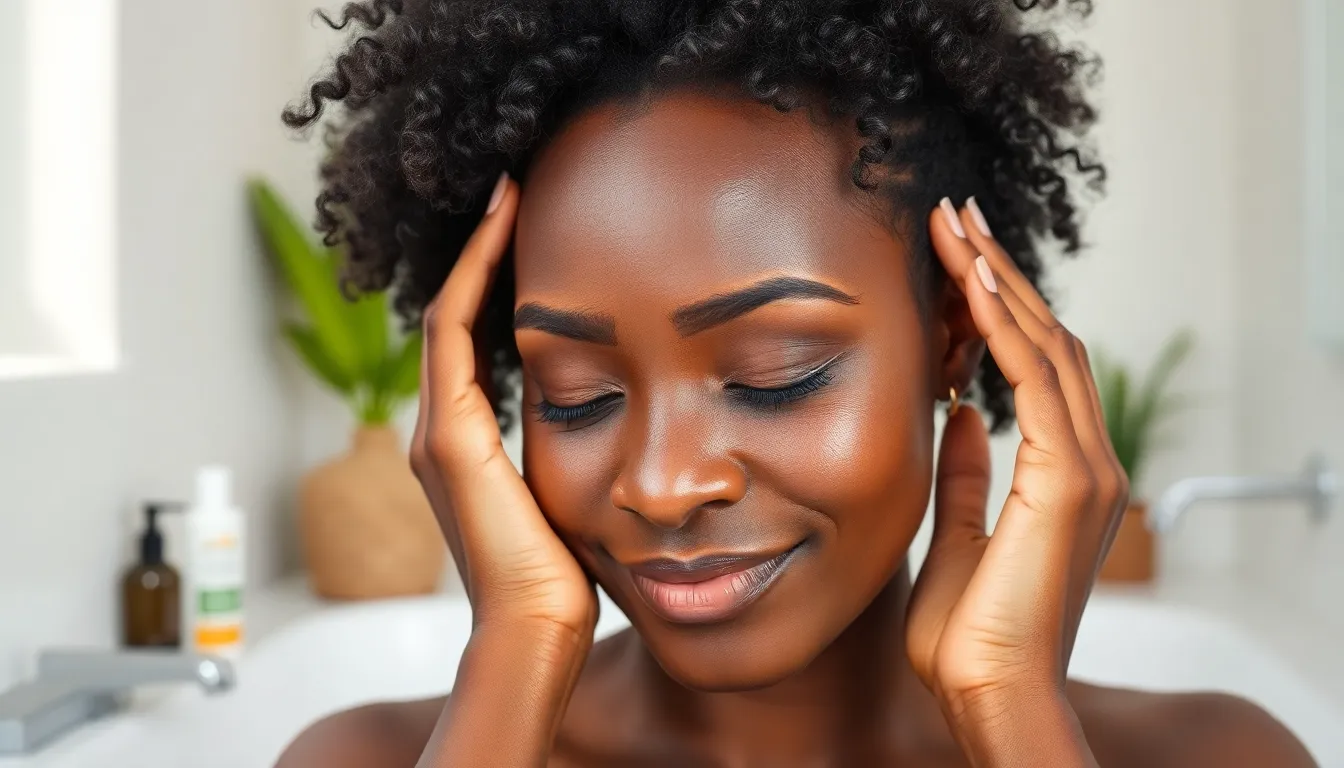
Creating optimal conditions for hair growth starts with nurturing the foundation where our hair develops. We must prioritize scalp health to support strong, resilient strands that can reach their full potential.
Regular Scalp Massages for Blood Circulation
Scalp massage enhances blood flow to hair follicles, delivering essential nutrients needed for healthy growth. We recommend incorporating gentle circular motions using our fingertips for 5-10 minutes daily. This simple technique stimulates dormant follicles while reducing stress that can impact growth cycles.
Benefits extend beyond circulation improvement to include relaxation and tension relief in the scalp muscles. Regular massage sessions help distribute natural oils from roots to lengths, promoting even moisture distribution. We can perform these massages during shampooing, conditioning, or as part of our nighttime routine.
Technique matters significantly for achieving maximum results without causing damage. Use moderate pressure while avoiding harsh rubbing or pulling motions that could irritate sensitive scalp tissue. Essential oils like peppermint or rosemary can amplify the circulation boosting effects when diluted properly.
Clarifying Treatments to Remove Buildup
Clarifying shampoo usage once monthly removes accumulated product residue that blocks follicles and prevents healthy growth. We need to eliminate buildup from styling products, natural oils, and environmental pollutants that create barriers on our scalp surface. This deep cleansing process restores our hair’s ability to absorb moisture and nutrients effectively.
Hot oil treatments applied twice monthly nourish the scalp while providing protective benefits for our strands. These treatments penetrate deeply to moisturize dry scalp tissue and strengthen hair from the roots. We can use coconut oil, jojoba oil, or specialized treatment blends heated to a comfortable temperature.
Application timing proves crucial for maximizing clarifying treatment effectiveness. Schedule these treatments before deep conditioning sessions to ensure our hair can fully absorb subsequent moisture treatments. Avoid over clarifying, which can strip beneficial natural oils and create dryness issues.
Recognizing and Treating Scalp Conditions
Common scalp conditions like dandruff and eczema significantly impact our hair growth potential when left untreated. These issues create inflammation that disrupts the natural growth cycle and can lead to hair thinning or loss. We must identify symptoms early including itching, flaking, redness, or unusual hair shedding patterns.
Professional dermatological consultation becomes necessary when home remedies fail to resolve persistent scalp problems. Medical treatments can address underlying causes of scalp irritation that prevent optimal growth conditions. Prescription medications or specialized treatments may be required for chronic conditions affecting our hair health.
Prevention strategies work better than reactive treatments for maintaining scalp wellness long term. We should monitor our scalp regularly for changes in texture, appearance, or sensation. Gentle cleansing routines, stress management, and avoiding harsh chemical treatments help prevent many common scalp issues from developing.
Incorporating Nutritional Support for Hair Growth

While external care forms the foundation of our hair growth journey, internal nutrition plays an equally crucial role in achieving the strong, healthy hair we desire. Proper nutritional support works from within to strengthen hair follicles and promote optimal growth conditions.
Essential Vitamins and Minerals for Healthy Hair
Vitamin C serves as our hair’s construction manager, helping produce collagen that gives structure to each strand. This powerful antioxidant works tirelessly to build the framework your hair needs for strength and resilience.
Vitamin E acts as our hair’s personal bodyguard, protecting follicles from oxidative damage that can slow growth. Research shows this antioxidant creates a protective barrier around hair follicles, keeping them healthy and productive.
Vitamin D functions as the master regulator for hair growth and maintenance cycles. Studies indicate that adequate vitamin D levels are essential for activating dormant hair follicles and maintaining consistent growth patterns.
Biotin powers the production of keratin, the protein that makes up 95% of our hair structure. This B vitamin strengthens hair from the inside out, reducing breakage and promoting length retention.
Zinc regulates hair growth cycles and prevents the type of hair loss that can derail our growth goals. This mineral ensures our follicles remain active and productive throughout their natural growth phases.
Hair Growth Supplements Worth Considering
Biotin supplements offer targeted support for those with confirmed biotin deficiency, though evidence shows minimal benefits for individuals with adequate biotin levels. We recommend getting tested before starting any biotin regimen to determine if supplementation is necessary.
Comprehensive vitamin and mineral supplements provide insurance against nutritional gaps that might be hindering our hair growth. These formulations work best when our regular diet lacks variety or when we have increased nutritional needs.
Specialized hair growth formulas combine multiple hair supporting nutrients in targeted ratios. Many of these supplements include the vitamins and minerals mentioned above, plus additional ingredients like saw palmetto or marine collagen.
| Supplement Type | Best For | Typical Results Timeline |
|---|---|---|
| Biotin | Confirmed deficiency | 3-6 months |
| Multivitamin | General nutrition gaps | 4-8 months |
| Hair exact formula | Comprehensive support | 3-6 months |
Foods That Naturally Boost Hair Health
Eggs deliver a complete package of hair supporting nutrients, including biotin, vitamins A and D, plus the building blocks for keratin production. We can incorporate eggs into our diet through various preparations to maximize their hair growth benefits.
Leafy greens and fruits provide abundant vitamins C and E that work together to promote healthy hair growth. Spinach, kale, berries, and citrus fruits offer concentrated doses of these essential nutrients in their most bioavailable forms.
Nuts and seeds supply zinc and selenium in natural ratios that support optimal hair growth cycles. Almonds, walnuts, pumpkin seeds, and sunflower seeds make excellent snacks that contribute to our hair health goals.
Fatty fish like salmon and sardines provide omega 3 fatty acids that nourish hair follicles from within. These healthy fats create the ideal environment for strong, resilient hair growth.
Sweet potatoes offer beta carotene that converts to vitamin A, supporting sebum production for natural hair moisture. This nutrient rich vegetable helps maintain the scalp environment needed for consistent growth.
Avoiding Common Mistakes That Hinder Growth

We’ve identified the most damaging hair care practices that prevent Black women from reaching their growth potential. These critical mistakes can undo months of progress and create cycles of breakage that seem impossible to break.
Over-Manipulation and Excessive Heat Styling
Over-manipulation destroys hair progress faster than any other single factor. Daily combing, brushing, and styling sessions create repeated stress on fragile hair strands, leading to breakage at the most vulnerable points along the shaft.
Protective styling offers the most effective solution for reducing daily manipulation. Twists, braids, and updos shield hair from environmental damage while minimizing the need for frequent handling. These styles should remain in place for several days or weeks, allowing hair to rest and recover from previous styling sessions.
Heat styling strips essential moisture from Black hair, leaving strands brittle and prone to snapping. Flat irons, blow dryers, and curling irons reach temperatures that fundamentally alter hair’s protein structure, causing permanent damage that accumulates over time.
Limiting heat exposure to once or twice per month preserves hair’s natural moisture balance. When heat styling becomes necessary, applying heat protectant products creates a barrier between hair and damaging temperatures, reducing the severity of thermal damage.
Chemical Processing and Relaxer Damage
Chemical treatments weaken hair’s structural integrity by breaking down protein bonds that provide strength and elasticity. Relaxers, perms, and color treatments create permanent changes that make hair more susceptible to breakage and environmental damage.
Extending time between chemical treatments allows hair to recover and rebuild its protein structure. Most professionals recommend waiting at least 8-12 weeks between relaxer applications, giving hair sufficient time to strengthen before the next chemical exposure.
Deep conditioning becomes essential after any chemical processing to restore moisture and flexibility. These intensive treatments penetrate the hair shaft, delivering proteins and moisture that help repair damage and prevent future breakage.
Professional application ensures proper chemical processing techniques that minimize damage. Attempting to relax or color hair at home often results in overlapping chemicals, uneven processing, and severe damage that requires months to repair.
Neglecting Ends and Length Retention
Hair ends represent the oldest and most fragile portion of each strand, making them particularly vulnerable to damage and breakage. These delicate sections have endured months or years of styling, environmental exposure, and daily manipulation.
Regular trimming prevents split ends from traveling up the hair shaft and causing more extensive damage. Scheduling trims every 8-12 weeks removes damaged ends before they can compromise the entire strand’s integrity.
Moisturizing and sealing techniques protect ends from dryness and brittleness that lead to breakage. Water-based leave-in conditioners provide essential hydration, while natural oils like jojoba and argan oil seal moisture into the hair shaft.
Protective end treatments create additional barriers against damage from friction, heat, and environmental factors. Applying heavier oils or butter-based products to ends during protective styling helps maintain moisture levels and flexibility throughout extended wear periods.
Creating a Nighttime Hair Care Routine
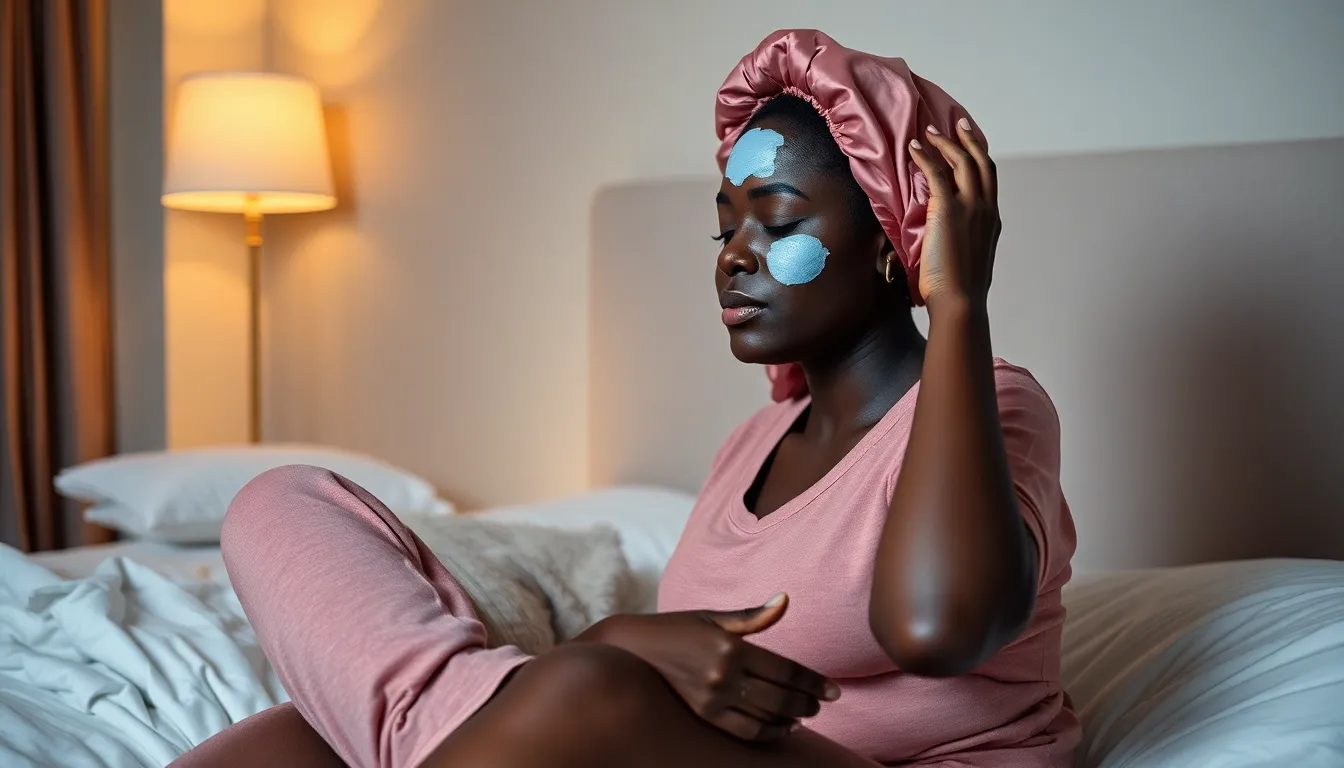
Your hair does most of its repair work while you sleep, making your nighttime routine crucial for growth and length retention. We’ll show you how to maximize these precious hours with protective techniques and nourishing treatments.
Protective Sleep Accessories and Techniques
Silk and satin accessories transform your sleep experience by reducing friction between your hair and fabric surfaces. These materials help retain moisture and prevent split ends and tangles that can sabotage your growth progress. We recommend investing in silk or satin bonnets, scarves, and pillowcases as essential tools for protecting natural hairstyles and extensions.
Bonnets offer the most comprehensive protection for your entire head, keeping styles intact while you sleep. Choose ones with adjustable bands that won’t create tension or leave marks on your forehead. Scarves provide versatility since you can wrap them in different ways depending on your hairstyle and comfort preferences.
Pillowcases made from silk or satin create a gentler sleeping surface when you forget your bonnet or prefer sleeping without head coverings. These smooth fabrics allow your hair to glide freely instead of catching and pulling like cotton does.
Overnight Treatments for Maximum Growth
Deep conditioning masks work their magic while you sleep, providing intense hydration and strengthening your hair shaft. Apply these treatments to damp hair before bed, focusing on your mid lengths and ends where damage typically occurs first. Cover with a plastic cap or silk bonnet to enhance penetration and prevent transfer to your bedding.
Hot oil treatments restore moisture and prevent breakage when used twice monthly as recommended by hair care experts. Warm oils like coconut, jojoba, or olive oil penetrate the hair cuticle more effectively than room temperature applications. Massage the warm oil into your scalp and through your strands, then cover overnight for maximum absorption.
Natural oils create a protective barrier that seals in moisture and repairs damage while you sleep. Focus application on your scalp to stimulate natural oil production and on your ends to prevent splitting. Different oils offer unique benefits, so experiment with combinations that work best for your hair’s porosity and texture.
Morning Refresh Methods
Light misting with water revives your hair’s moisture levels after a night of rest. Use a spray bottle filled with distilled water or a water based leave in conditioner to gently refresh your strands. This technique works especially well for hair that tends to dry out overnight or looks flat after sleeping.
Gentle detangling prevents unnecessary breakage when done with the right tools and technique. Use a wide tooth comb or your fingers to work through any tangles that formed overnight, starting from the ends and working up to the roots. Never detangle dry hair, as this significantly increases your risk of breakage.
Protective styling safeguards your hair from daily manipulation and environmental exposure throughout the day. Simple styles like loose twists, braids, or buns keep your ends tucked away and minimize handling. Choose styling products without harsh chemicals that can dry out your hair and counteract your nighttime moisture efforts.
Tracking Your Progress and Adjusting Your Routine

Now that we’ve established our comprehensive hair care routine, it’s time to monitor our progress and fine-tune our approach for optimal results.
Measuring Growth and Length Retention
Document your hair’s journey with regular measurements using a tape measure or hair growth tracker app to monitor length changes over time. We recommend measuring from the same starting point every 4-6 weeks to ensure consistency in our tracking efforts.
Capture visual progress through monthly photos taken in the same lighting and position to observe subtle changes that measurements might miss. Position your hair the same way each time to create an accurate visual timeline of your growth journey.
Maintain detailed records in a hair diary to note changes in routines, products used, and observed results. We suggest recording weekly observations about moisture levels, breakage patterns, and overall hair health to identify trends over time.
Track exact metrics including length retention rates, breakage frequency, and scalp condition improvements. Create a simple table to log measurements, noting any correlation between product changes and hair health improvements.
Identifying What Works Best for Your Hair
Understand your hair’s characteristics by determining your hair type, porosity level, and texture to choose appropriate products and care methods. We can assess porosity by performing the water drop test or observing how quickly our hair absorbs and releases moisture.
Experiment systematically with one product or technique change at a time to isolate what truly benefits your hair. Wait at least 4-6 weeks before making additional changes to see genuine results from each modification.
Monitor moisture levels regularly using hydrating products and deep conditioning treatments to maintain optimal moisture balance. Adjust your moisturizing frequency based on seasonal changes and your hair’s response to different products.
Evaluate protective styling effectiveness by tracking how different styles like twists or braids impact your hair’s health and growth retention. Note which styles cause less manipulation and provide better length retention over time.
Assess heat usage impact by limiting heat styling and documenting how your hair responds to reduced thermal exposure. Use heat protectants when necessary and compare hair health during high-heat versus low-heat periods.
When to Seek Professional Help
Consult a dermatologist if you experience important hair loss even though following proper care routines, as underlying health issues may be affecting your hair growth. We should seek medical attention when losing more than 100 hairs daily or noticing sudden changes in hair density.
Address scalp concerns by seeking professional advice when experiencing scalp irritation, redness, persistent itching, or other abnormalities that don’t improve with gentle care. Professional evaluation can identify conditions like seborrheic dermatitis or scalp psoriasis that require specialized treatment.
Consider a trichologist consultation when dealing with chronic hair breakage, stunted growth, or texture changes that don’t respond to routine adjustments. These hair and scalp specialists can provide targeted answers for complex hair health issues.
Schedule regular salon visits for professional treatments like deep conditioning, protein treatments, or scalp therapies that complement your home routine. Professional stylists can also provide objective assessments of your hair’s progress and recommend technique improvements.
Conclusion
We’ve covered the essential strategies that make all the difference in your hair growth journey. From understanding your unique curl pattern and porosity to establishing consistent daily routines these proven techniques work when applied consistently.
Remember that healthy hair growth isn’t just about external care—it’s about nourishing your hair from the inside out through proper nutrition and maintaining optimal scalp health. The combination of protective styling gentle handling and targeted treatments creates the perfect environment for length retention.
Your hair’s needs are unique to you. Take time to track your progress adjust your routine as needed and don’t hesitate to seek professional guidance when necessary. With patience and the right approach you’ll see the healthy vibrant hair growth you’ve been working toward.
Frequently Asked Questions
What makes Black hair different from other hair types?
Black hair has a unique curved structure that makes it more fragile and prone to breakage. The curl pattern creates weak points along the hair shaft, and the natural oils from the scalp have difficulty traveling down the curved strands, leading to increased dryness and requiring specialized care methods.
How often should I wash my Black hair?
Most Black hair types benefit from washing once or twice per week maximum. Over-washing can strip natural oils and cause excessive dryness. Consider co-washing (using conditioner only) between wash days to maintain moisture while gently cleansing the hair and scalp.
What is hair porosity and why does it matter?
Hair porosity refers to your hair’s ability to absorb and retain moisture. Low porosity hair resists moisture but retains it well once absorbed, while high porosity hair absorbs moisture quickly but loses it just as fast. Understanding your porosity helps you choose the right products and techniques.
What are the best oils for Black hair?
Natural oils like coconut, jojoba, argan, and olive oil work well for sealing moisture into Black hair. Coconut oil penetrates the hair shaft, while jojoba closely mimics natural sebum. Choose oils based on your hair’s porosity and thickness for optimal results.
How can I prevent breakage in my Black hair?
Prevent breakage by keeping hair moisturized, using gentle detangling techniques on wet hair with conditioner, sleeping on silk or satin pillowcases, avoiding excessive heat styling, and handling hair gently during styling. Regular protein treatments also help strengthen the hair structure.
What foods support healthy hair growth?
Include protein-rich foods like eggs and fish, leafy greens for iron and folate, nuts and seeds for healthy fats and zinc, sweet potatoes for beta-carotene, and foods rich in vitamins C, D, and E. These nutrients support hair follicle health and growth.
How often should I trim my Black hair?
Trim your hair every 8-12 weeks to prevent split ends from traveling up the hair shaft and causing further damage. Regular trims help maintain healthy ends and support length retention by preventing breakage from damaged areas.
What’s the importance of scalp health for hair growth?
A healthy scalp is essential for strong hair growth. Regular scalp massages improve blood circulation, clarifying treatments remove product buildup, and addressing scalp conditions like dandruff ensures optimal growing conditions. The scalp is the foundation for healthy hair.
Should I take hair growth supplements?
Consult a healthcare provider before starting supplements. While biotin, vitamin D, iron, and zinc can support hair health, it’s best to test for deficiencies first. A balanced diet often provides necessary nutrients, and supplements work best when addressing specific deficiencies.
How do I create an effective nighttime hair routine?
Use silk or satin pillowcases or scarves to reduce friction, apply overnight treatments like deep conditioning masks or hot oil treatments weekly, and loosely protect hair with braids or a silk bonnet. This routine helps hair repair itself while you sleep.
